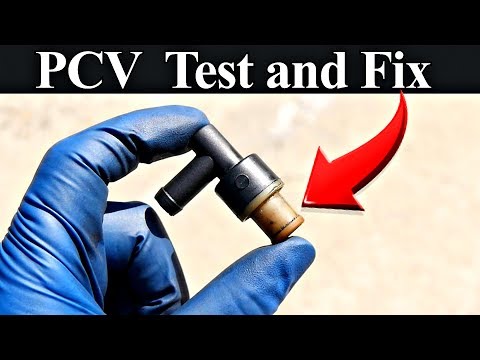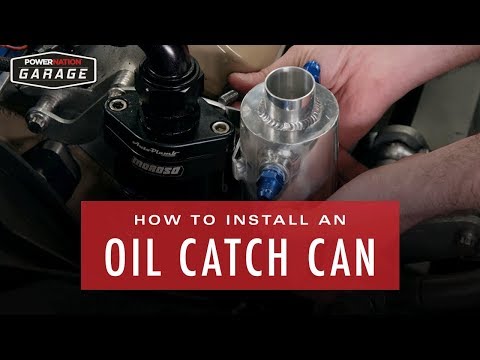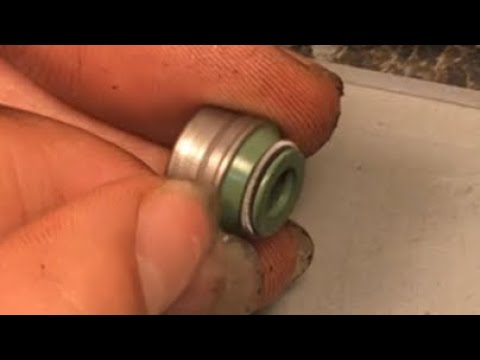
Have you noticed a substantial amount of oil may have dripped out the intake manifold after you’ve removed it for any reason? Or you might’ve discovered an oily layer covering the throttle body and other intake hoses.
Either way, you’re probably left wondering what could’ve caused it. Moreover, is this a telltale sign of an engine issue, and should you worry about it? And, most importantly, how to prevent this from happening again.
Well, all of this will be covered in this article as we explain how the engine oil might find its way into the intake manifold and what you could do about it.
Should I worry about oil in the intake manifold?
Even if in the best shape, every modern engine will have some traces of oil in its intake manifold. This happens because of the PCV system, which vents the engine’s fumes into the intake. Once in contact with the cold intake manifold and throttle body, these oily gases may condense and form thin layers of oil.
Still, only negligible amounts of oil are acceptable, assuming everything is in good condition. You can verify this by thoroughly cleaning the intake manifold, throttle body, and the remaining intake hoses with carb cleaner. If no significant traces of oil are present in the intake after driving for several days, you’re all good.
But if the oil keeps showing up inside the intake, you have an engine issue. And to find out what of the above might be causing it, you must be methodical.
How to remove oil from the intake manifold
The first thing you’ll want to do after finding oil in your car’s intake manifold is to clean it out. And because the manifold usually has a complex shape, you’ll have to remove it from the engine bay. Here’s a step-by-step guide on how to do this.
9 Common Causes of Oil Leaks in the Intake Manifold
As it doesn’t require lubrication, the intake manifold usually has no lubricants anywhere inside it. This means that any traces of oil inside it must’ve originated from elsewhere, which is, in most cases, the engine. There are several ways for the engine oil to get into the intake manifold, with some being more likely than others.
1. Malfunctioning PCV system

Every modern car features a PCV system, which stands for Positive Crankcase Ventilation. This system vents the oil fumes that the engine produces during operation due to heat, friction, and a process called blow-by, which we’ll detail later. Instead of letting these fumes escape into the air, the PCV system routes them back into the intake to burn during combustion.
Most cars have a straightforward PCV system. A rubber hose connects the engine’s valve cover to the intake manifold. Additionally, a PCV valve regulates the flow of fumes, ensuring they enter the intake only under the right conditions. Often, this valve becomes the main point of failure in the system and can get stuck.
When this malfunction occurs, the engine might pull excessive oil fumes into the intake, especially during rapid accelerations or while idling. Although the engine will burn most of these fumes, some can collect inside the manifold. It’s also worth mentioning that some cars, particularly German-made ones, feature more advanced PCV systems with components like oil separators and multiple hoses.
Any of these components can lead to PCV-related problems, with oil in the intake being a common symptom.
2. Worn piston rings
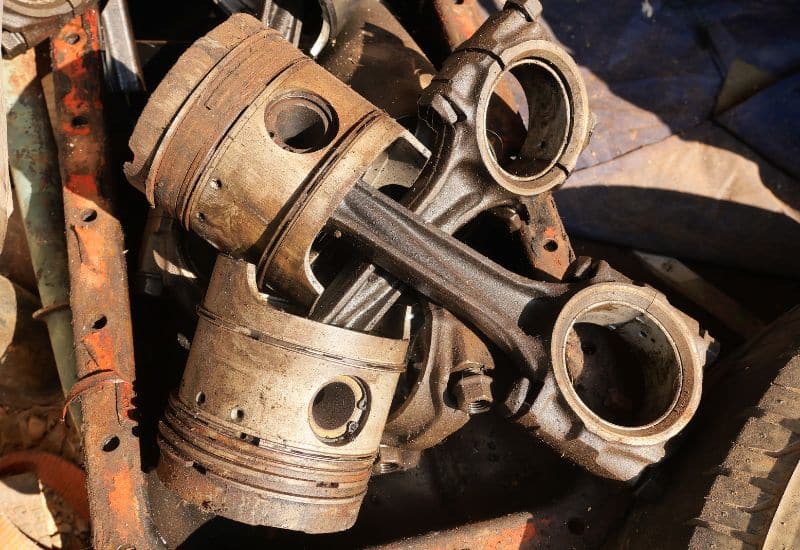
When ignited during combustion, a compressed air-fuel mixture pushes the piston, which turns the crankshaft and generates power. Still, the resulting high-pressurized gases inside the cylinder will try to pass the piston and its compression rings.
And those who manage are called blow-by gasses, something every internal combustion engine has. If in acceptable amounts, this will be vented through the PCV system, not causing any additional problems.
But, if wear and tear have affected the piston rings or cylinder walls, creating excessive space between them, oil can enter the combustion chamber during the compression stroke. This condition allows a significant volume of combustion gases to flee the combustion chamber and invade the engine’s crankcase. Once there, these gases build up pressure and combine with existing oily fumes. This results in oil burning, generating oil vapor that the intake manifold can draw in.
The only exit for this mixed vapor remains the PCV system. As you might expect, this situation can lead to outcomes similar to those caused by a malfunctioning PCV valve.
3. Turbocharger issues
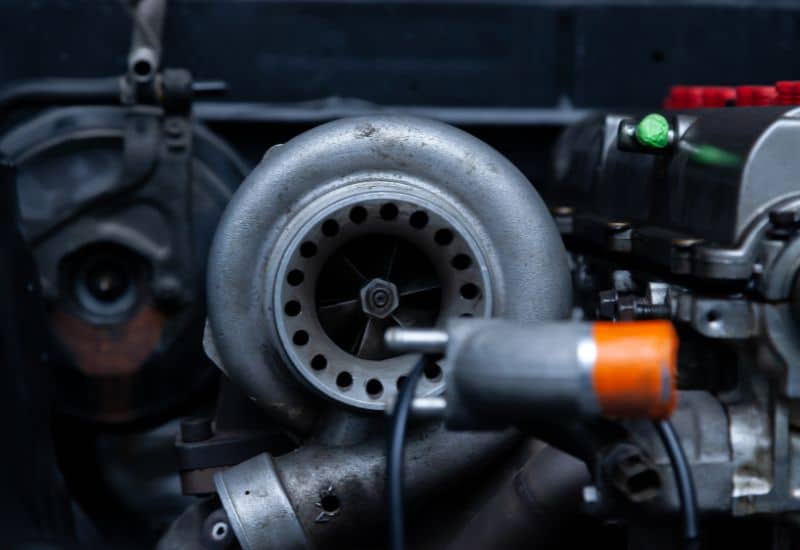
Many modern engines have turbochargers, which use exhaust gas flow to pressurize the intake air. This power-upping component has a shaft that rotates at high speed and needs to be lubricated. In most cases, the lubrication is done by oil feed from the engine. This shaft has seals at both ends, which prevent oil from leaking into the turbocharger.
These seals, however, are constantly exposed to high temperatures and speeds and may fail with time. Consequently, the oil coming from the engine will leak into the turbocharger, with two possible results. If this happens at the exhaust side, it will be burned off by hot exhaust gasses, causing clouds of white smoke.
Alternatively, the escaping oil may leak to the turbocharger’s intake side, from where it gets into the flow of pressurized fresh air. And if this happens, there is likely to be a lot of oil inside the engine’s intake manifold.
4. Leaking valve seals
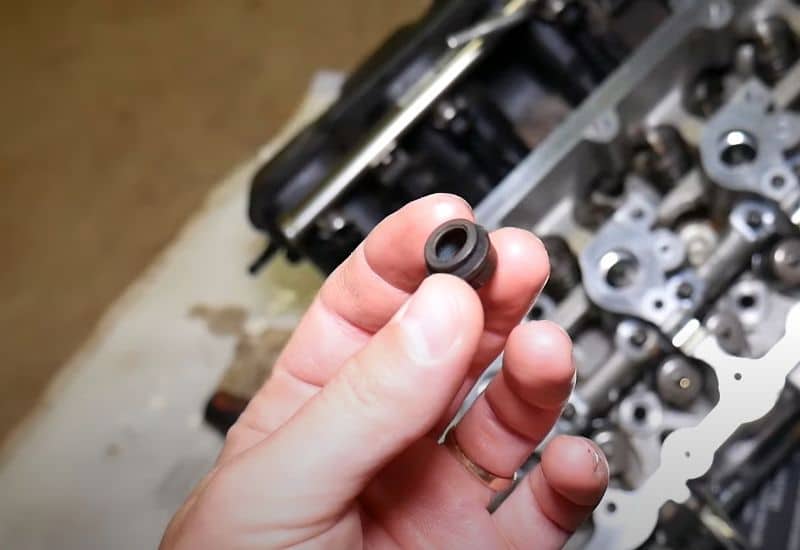
All internal combustion engines, apart from rotary ones, have intake and exhaust valves. And because the cylinder head is flushed with engine oil, each calve has a seal on its stem. If they wear out or break apart, the oil will slowly leak down the valves and into the combustion chamber.
And in some specific situations, the leaking oil might even find its way into the intake manifold. This usually happens with slanted or V-shaped engines, assuming their intakes are on the low-hanging side. Still, such configurations are rare, making leaking valve seals less likely to cause the oil to appear inside the intake manifold.
5. Clogged oil passages
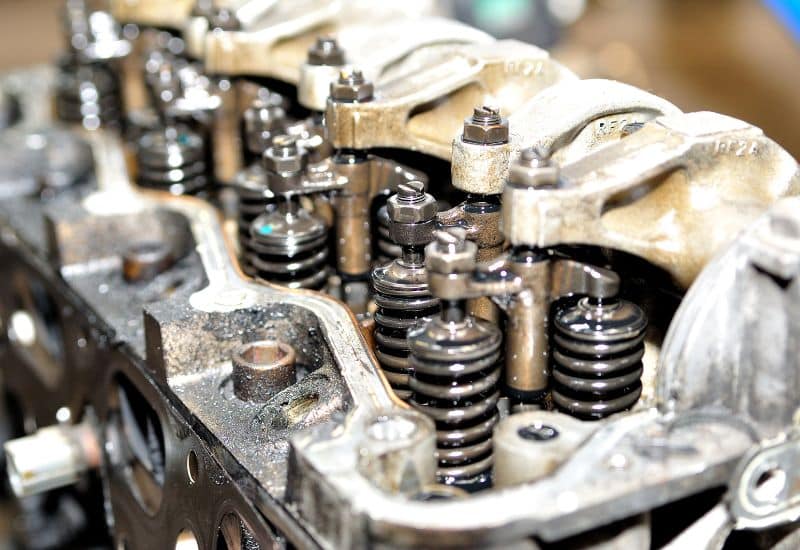
The engine has many passages and channels in its block and cylinder head, through which oil and coolant flow while it’s running. Should any of these channels get blocked or clogged, these fluids might start leaking out somewhere. And one of the places where the leaking oil may end up is the intake manifold.
In most cases, oil passages get clogged because of poor maintenance, with oil changes not being done frequently enough.
6. Aftermarket air filters
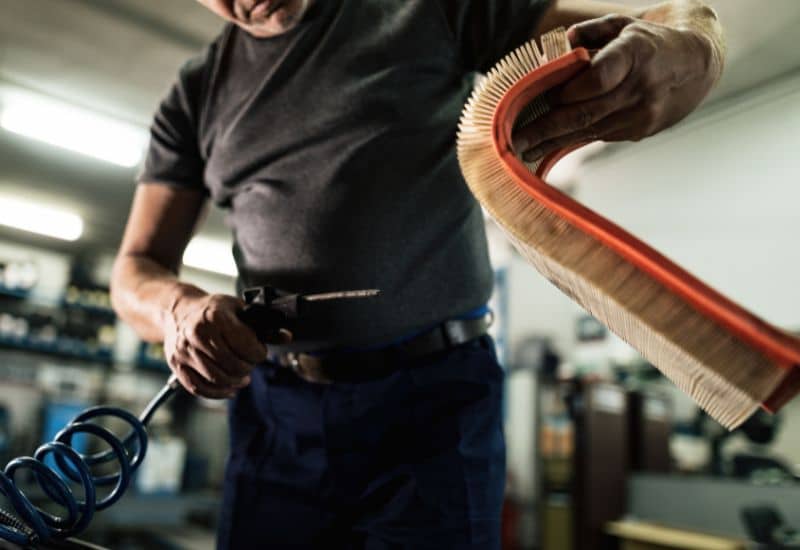
Some air filters, especially high-performance ones, use fabric or foam instead of paper sheets. Besides increased airflow, such an air filter is reusable and can be washed and cleaned. These must be coated with a special oily lube after every wash to ensure sufficient filtration.
But if this is done too plentifully, the excess oil will be washed away with incoming air. As this oily spray goes through the intake hoses and manifold, it will coat its walls with a thin layer of oil-like substance.
How to prevent oil from getting into the intake manifold?
To ensure the oil won’t get into the engine’s intake anymore, you’ll first have to determine where it’s coming from.
1. Checking the PCV system
As the most common cause for this issue, the PCV system should be the starting point. First, find where the hose coming from the PCV valve plugs into the intake. If intake hoses ahead of this point look clean, and everything after it is coated with oil, you’ve found where it’s coming from.
Still, narrowing down whether this is caused by a faulty PCV valve or worn piston rings will be needed here. The more expensive of the two – piston rings – can be eliminated with a compression or leak-down test.
Alternatively, there is a simple trick you can try instead. With the engine running and warmed up, pull out the oil dipstick. If the piston rings are worn, there will be clouds of oily smoke from the dipstick’s tube caused by excessive crankcase pressure.
2. Installing an oil catch can
As for PVC systems, it’s worth mentioning that factory configurations in some specific models are not particularly good at eliminating oily fumes. This, consequently, means you might have oil in the intake manifold even after fitting a new PCV valve and all hoses.
The solution to this problem is an aftermarket upgrade called an oil catch can. As its name would suggest, this is a metal can that catches oil fumes before they enter the intake. It’s easily installed inside the engine bay, where it taps into the PCV’s hoses. On the downside, you’ll have to periodically check the level of caught oil inside the can and empty it when it gets full.
3. Repairing the turbocharger
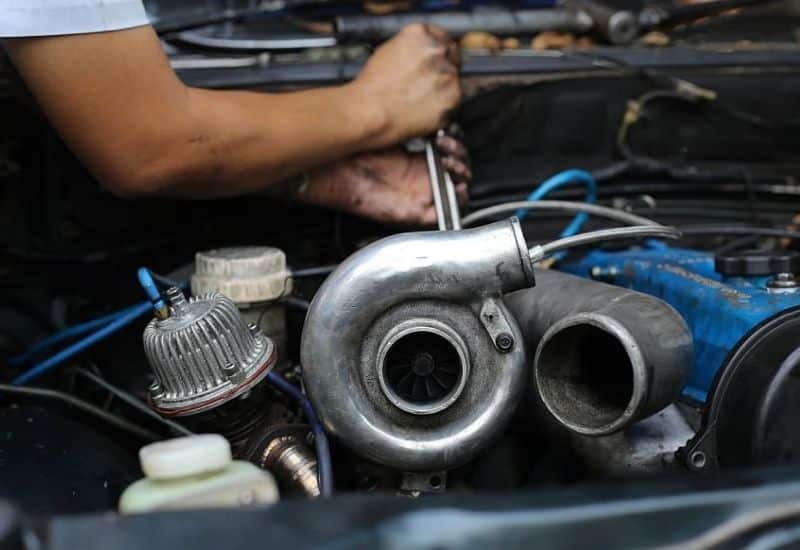
Alternatively, you may see that the whole intake, including hoses going to the airbox, is coated with an oily layer. If the engine in your car has a turbocharger, this could be a telltale sign it’s leaking. And that’s something you don’t want to ignore, as it can destroy the engine if left like that.
If leaking severely, a turbocharger could drain all of the engine’s oil within a few hundred miles. Buying a new turbo or having yours rebuilt is the only solution here. Another possible cause for this, presumably, is an overly-oiled aftermarket air filter.
4. Replacing valve seals
In some rare cases, the oil might be coming into the intake directly from the engine through its intake ports. This might happen if the valve steam seals are worn out and leaking badly. Blocked oil passages could have the same effect, with built-up pressure pushing oil out through surrounding gaskets.
But regardless of what might be causing the problem, you should fix it within a reasonable timeline. The fact is that oil inside the intake manifold, in whatever amounts it may be present, is just a portion of what flows through it when the car is running.
Most of these oily fumes will get into the engine, where they get burned off during combustion. They will cause all sorts of problems while doing so, including fouling up spark plugs and creating carbon buildups.
Moreover, burnt oil will coat the catalytic converter with layers of hydrocarbons, affecting its performance.
Frequently asked questions
Can oil in the intake manifold cause a misfire?
Not only the oil in the intake manifold could cause an engine misfire, but it most likely will. This is because it and oily fumes in the incoming air stream will finally get into the cylinder. Once inside, they will foul up the spark plugs and create carbon deposits at their tips. This prevents them from making an intense and reliable spark, which results in a misfire. Replacing the spark plugs in such a situation will only temporarily solve the problems, as the new ones will soon get fouled.
What happens if oil gets into the intake manifold?
The oil inside the intake manifold and the oily fumes it usually resulted from might, in most cases, impact the engine’s operation and performance. Issues and symptoms you may experience include rough idle, misfire, or stalling, among other things. The problem may get even more severe if oil in substantial amounts gets into the combustion chamber. This is an incompressible fluid, so it will likely hydro-lock the engine and destroy its internals.
Will my engine get damaged if there is oil in the intake manifold?
On its own, oil that has gathered up inside the intake manifold shouldn’t cause any direct damage to the engine. This, however, doesn’t mean that no potential risks are involved here. For instance, a substantial amount of this oil could get pulled into the engine during hard accelerations. And once it’s inside the cylinder, this incompressible fluid might hydro-lock the engine. If it happens, this causes major havoc, as it damages the pistons and bents the conrods. In addition, stuck-open PCV valves and leaking turbochargers can cause extremely high oil consumption.
Wrap up
Oil is not something to be found inside the car’s intake manifold. And if it is, it’s usually a sign of an engine issue. This unwanted oil has often come from the engine through the PCV system. This can be because of a faulty PCV valve or excessive pressure inside the crankcase caused by worn pistons.
Other likely causes include a leaking turbocharger, assuming the car has it, and worn valve stem seals. And because the oil in the intake manifold will cause engine running issues, you should fix the problem without delay.

Written By
Jason Farrell
Jason Farrell is a certified master technician, the editor of Mechanic’s Diary in Pittsburgh, Pennsylvania. He is ASE (Automotive Service Excellence) certified and earned a Bachelor’s Degree in Automotive Technology from Pittsburg State University. With nearly 18 prior years of experience in the automotive field, he has extensive knowledge about Domestic, European, and other foreign makes and models of cars and light trucks. Jason’s experience working as a technician and service manager at dealerships, gave him the experience and know-how of most aspects of inspection, diagnosis, and repair from engine and drivability to electrical, HVAC, brakes, steering and suspension and everything in between.

